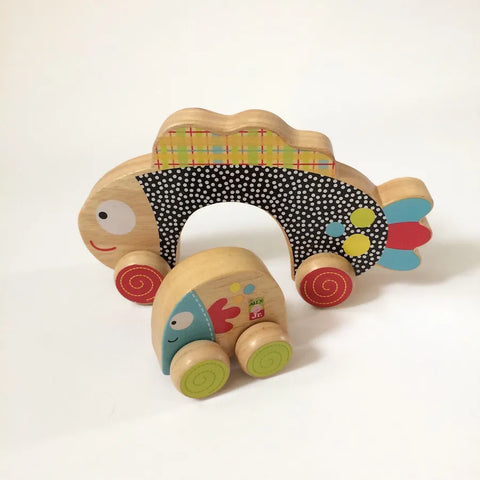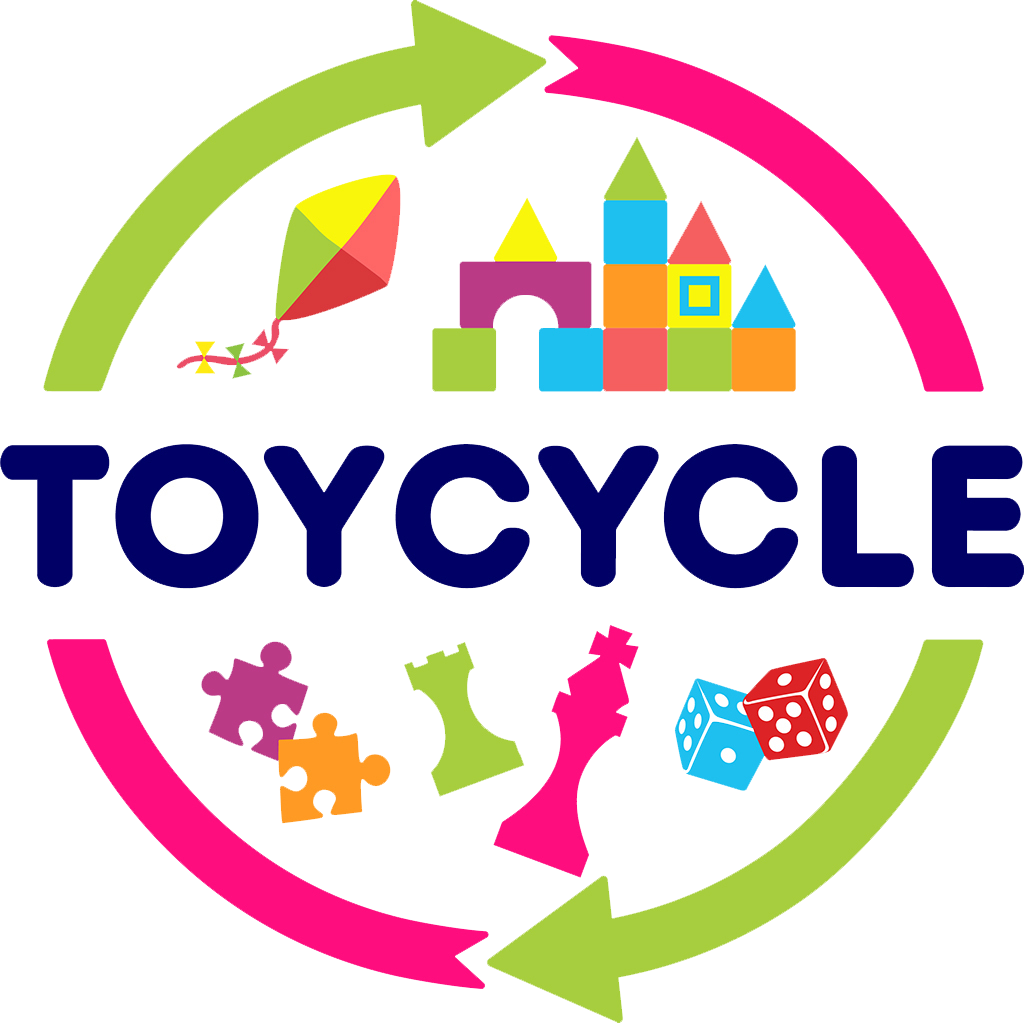How often do you engage your child in meaningful play? Studies suggest that parents spend about half an hour each day playing with children under six. But they only spend five minutes per day on their child's education. This suggests that we know early childhood learning occurs during play. But we may not be sure what or how children are learning. So we've created a list of easy parallel activities to get the most value from your child's favorite learning toys.
Parallel Activities with Rolling or Pull Toys
 Any rolling toy or pull string toy can be used for early awareness of shapes, sounds, letters, or numbers.
Any rolling toy or pull string toy can be used for early awareness of shapes, sounds, letters, or numbers.
Drape a long piece of yarn on the floor in the shape of whatever you fancy. A circle, square, number, or letter will work. Make it large, several feet in diameter. Clear the area for energetic activity.
Model how to push or pull the toy along the trace of the string. Say or chant the sound of the letter (or the number or shape's name). Your child may follow along behind you. Repeat, increasing in speed each round.
Next time have your child lead and you follow. This makes it an imitating game, similar to “Duck, Duck, Goose." It's fun to start slow, and each round picks up faster and faster.
Once this game's novelty wears off, you can use the yarn another way. Pull the yarn taught along an incline from the floor up to the top of the sofa or the child's desk. Move the toy along the string “up” or “down” to teach your child direction vocabulary. You can also pretend the toy moves over objects. Take turns making paths with the string for the other to follow, repeating “up” and “down” or “over” as your child moves the toy along the string of yarn's route. Enjoy stacking up obstacles!
 We don't typically think of bowling playsets as learning toys. But bowling sets are great for activities that grow in complexity with your child's development. If your child is learning the ABCs, use this game to support them. Knock down three pins and recite three letters of the alphabet. Continue in order with each turn until getting to Z and the end of the game.
We don't typically think of bowling playsets as learning toys. But bowling sets are great for activities that grow in complexity with your child's development. If your child is learning the ABCs, use this game to support them. Knock down three pins and recite three letters of the alphabet. Continue in order with each turn until getting to Z and the end of the game.
When your child enters school and begins learning phonics, use the bowling set as reinforcement. Place sticky labels on two bowling pins. Label each of them with an area of phonics that is tricky for your child. For example, one pin can be labeled 'P.' Another can be labeled 'B.' If the 'P' pin is knocked down, your child can think of a word that has only 'P' but not 'B.' Likewise, if the 'B' pin is knocked down, the child thinks of a word with only 'B.' If both pins go down, your child races to think of words with 'P' and 'B' such as bumper, blooper, blimp, etc.
Another variation of the game focuses on place value. Label each bowling pin with a place value (1, 10, 100, or 1000). When the pins are knocked down, your child adds the number of points on a whiteboard to practice aligning numbers by place value.
Shape sorters are great learning toys for young children because they naturally love to see shapes fits into slots. A few parallel activities allow children to discover 3-D properties.
What to doPlace many small items in a small basket and hide the shapes amongst all the other items. This allows your child to experiment with different types of toys that might also fit into the slots. While at the same time they scavenger hunting for the right one.
Or try this activity for children at least four-years-old. Prepare aluminum baking pans with different materials in each, like playdough, wet sand, fake snow, and slime. Let your child stick the shapes in each to see which leaves an imprint. Allow them to further experiment with the 3-D objects by covering them in the dough like a mold. Finally, leave some of the shapes out on sun print paper to imprint the shapes in a work of art.
There are so many ways to augment your child's learning with parallel activities during play. Once you get started, you'll discover new ones with your child and you'll both benefit from playtime.




 Other Learning Toys: Shape Sorters
Other Learning Toys: Shape Sorters